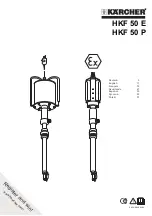
GB
13
LISTENING TO iPod
This model includes adapters for docking different iPod models. If the docking port will not be used for an
extended period of time, it is recommended to cover the docking port by using the “Dock Cover” insert
(included).
1. Select a suitable adapter for your iPod and insert it into the docking area. Your iPod can now be
docked by placing the iPod onto the connector in the docking bay.
2. Set the HOLD Switch of your iPod to the OFF position to unlock the click wheel navigation controls.
3. Place your iPod into the docking station making sure that it is properly seated.
4. Press the iPod Button on top of the unit or on the remote control to turn the power ON.
5. Press the iPod PLAY / PAUSE ( ) Button to begin playback. Adjust the Volume, EQ, Bass,
Treble and Surround according to the desired settings.
6. Press the TUN + ( ) / TUN - ( ) Buttons to go forward or backward on a track. To fast
forward or fast rewind within the track, press and hold the TUN + ( ) / TUN - ( ) buttons.
7. To stop playback, Press and hold the iPod PLAY / PAUSE ( ) Button until the iPod shuts off.
Note: If you wish to navigate through the iPod menu to select-Artists, Albums, Songs, Genres
and etc, you must use the iPod click wheel navigation controls as usual. The following functions
cannot be controlled directly by the unit or the remote control.
HEADPHONE CONNECTION
Users can listen to music privately by connecting headphone on to the unit. The HEADPHONE
Jack is located at the front of the unit.
LISTENING TO AN EXTERNAL AUDIO SOURCE
The unit provides an auxiliary audio signal input for connecting any external audio devices.
1. Connect an audio cable (not included) with 3.5mm stereo plug to the Line Out Jack of your external
audio device.
2. Turn on the external audio device.
3. Connect the 3.5mm stereo plug at the other end of the cable to the Aux Jack located at the front of
the unit.
4. To select auxiliary audio input, press the Aux button and select AUX mode.
5. The volume level can now be controlled through the main unit. Operate all other functions on
the auxiliary device as usual.
The mark is in compliance with the Waste Electrical and Electronic Equipment
Directive 2002/96/EC (WEEE)
The mark indicates the requirement NOT to dispose the equipment including any spent or discarded batteries as
unsorted municipal waste, but use the return and collection systems available. If the batteries or accumulators in-
cluded with this equipment, display the chemical symbol Hg, Cd, or Pb, then it means that the battery has a heavy
metal content of more than 0.0005% Mercury, or more than 0.002% Cadmium or more than, 0.004% Lead.
In the unlikely event of a problem developing, please contact the store where you purchased your equipment.
:HFRQWLQXDOO\VWULYHWRLPSURYHRXUSURGXFWVVSHFL¿FDWLRQVPD\FKDQJHZLWKRXWSULRUQRWLFH
For advice on where to purchase accessories, please contact the store where you purchased your
equipment.
7KHVSHFL¿FDWLRQDQGH[WHUQDODSSHDUDQFHRIWKHXQLW
are subject to change without prior notice***
































